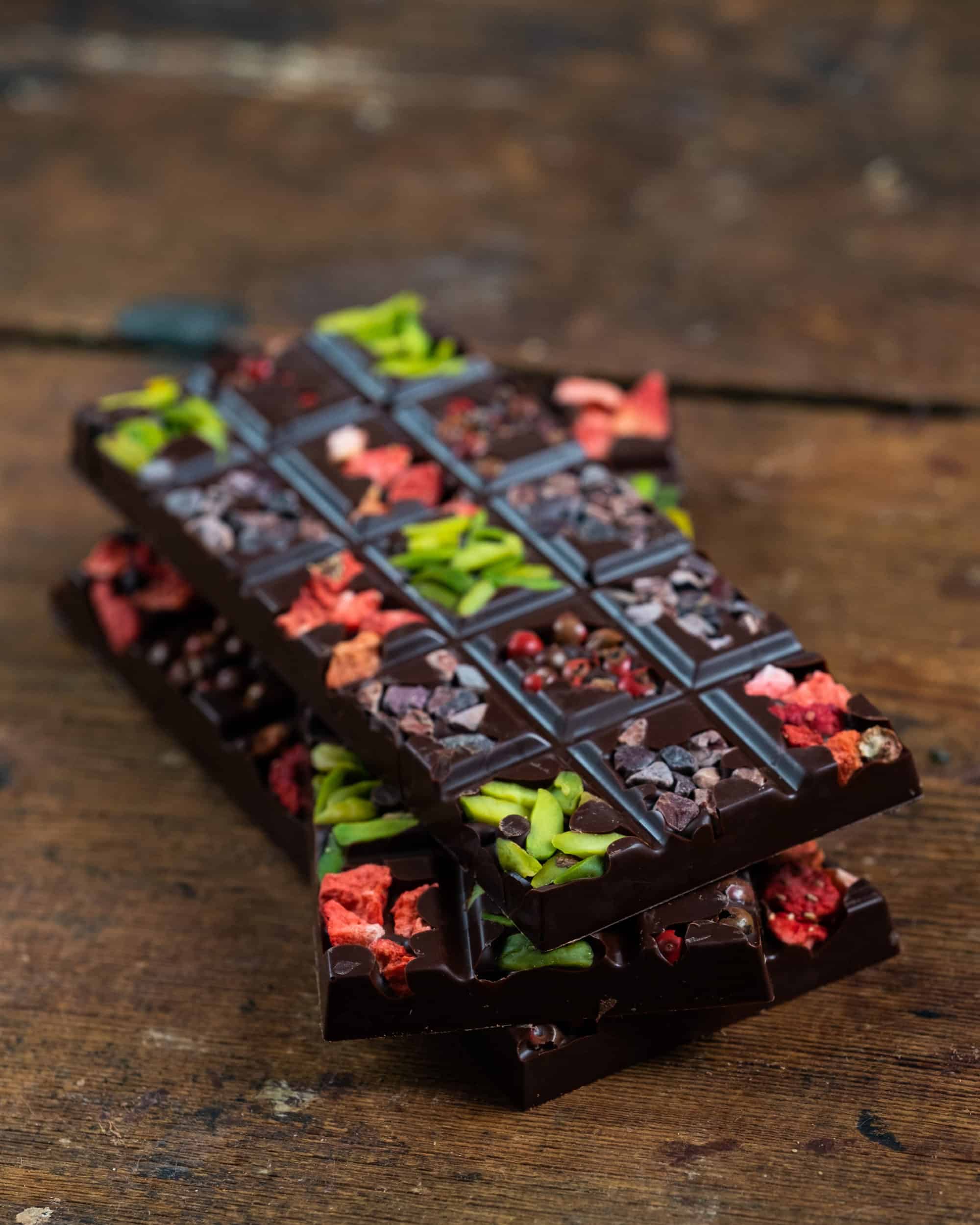
Intermediate & Advanced
It’s recommended that you have experience working with chocolate before attending this class.
Ready To Make Beautifully Designed Bonbons?
This class focusses on all aspects on making bonbons which includes colouring, shelling, filling and layering and capping.
Each class covers a new bonbon and therefore new designs, flavours and elements.
Technical skills that lead to creative expression
This is an immersive, fully hands on class for enthusiastic home cooks and professional chefs alike. Learn all aspects of chocolate making in a laid back atmosphere with like minded people.
Elements covered in this intensive …
Colouring/Design
Colouring moulds is a large aspect of this bonbon intensive. On day 1 we will colour 3 different moulds using a wide collection of techniques and colours. We’ll be using naturally coloured cocoa butters and stone ground chocolates in this class to create gorgeous chocolate shells. Each student will design their own bonbons and take these home with them at the end of the weekend intensive.
Pralines
We’ll use a stone grinder to make our own praline paste from scratch. The benefit of using a grinder is that you can use a granulated sweetener, like coconut sugar, and it will go smooth during the grinding. If you use a food processor, the sugar will not go nearly as fine as when it’s ground. This leaves a gritty mouthfeel.
Making pralines is easy and they have a long shelf life. So, you can make them far in advance and just melt them down when you’re ready to use them. If you’re not already making your own chocolate, I’ll give you an alternative method to making this praline using simple, easy to find ingredients.
Insertable Discs
The importance of a long shelf life carries through every element of making bonbons and these insertable discs are made without using water, or any liquid that would reduce shelf life. Typically the discs I use are brownies or cookie dough discs that can be easily cut to fit the back of the cavity of the mould you’re using. Another type of ‘disc’ is a pipeable one, but not all layers are able to be made pipeable.
All Natural, Refined Sugar Free Caramels
In this intensive, we’ll be making a couple of dairy free caramels that are all natural (don’t use glucose syrup or sorbitol, etc… ) and very easy to make. Another benefit of these is that you can use any sweetener and any cream you’d like. This makes the caramels very versatile and easy to adapt for any recipe where you want that sticky, gooey texture. Depending on how you prepare the caramel, you can make it a very long shelf life – up to 2 months.
Ganache
Although making ganache can appear rather straightforward, it’s actually one of the most tricky elements to nail. I’ve come up with my own signature recipe and method for making ganache perfectly every time. The key to this recipe is a few core ingredients which can be chopped and changed to make dark, milk, blonde or white ganaches as well as fruity ganaches too.
Flavour Pairing
One of the most popular topics people want to explore with me is flavour pairing and how to combine flavours that are a little different. So, we’ll spend some time discussing my process of flavour pairing and developing new recipes. We can also spend time discussing your ideas, recipes you’d like to create and how to go about doing so.
Cleaning & Polishing Moulds
This might seem like an obvious point, but caring for your professional moulds is very important. The way you care for them will ensure longevity of the mould and a brilliant, mirror shine on the chocolate.
Shelling & Capping
No matter how much experience you have in this, you can always refine your technique and learn something new. My technique for both these applications has changed over the years, and now I cap by applying chocolate to the back of the mould, rather than using an acetate sheet. It’s quick and easy once you know some little tricks and get some experience under your belt.
Getting To Marlborough
Coming by train to Marlborough
- The nearest train stations to Marlborough are Great Bedwyn and Pewsey.
- From Great Bedwyn, the 20 bus goes from just outside the station on The Square to Marlborough. This bus runs once per hour.
- From Pewsey station by bus, take the X5 bus towards Swindon from outside of the Methodist Church to Marlborough High Street, just outside the Lloyds Bank.
- For taxi’s, book a taxi well in advance as there are no Uber’s in this area. To find a selection of taxi services search for Marlborough Wiltshire taxi services or try further afield in towns like Swindon and Devizes.
Local Taxi’s
- Arrow – 01672 515567
- Browns – 07847 097189
- PD Taxi’s – 01672 511884
- Paragon – 07823 337377
- Ogbourne – 07791 673192
The Local Area
The thriving town of Marlborough and the neighbouring pretty village of Manton are set in the stunning scenery of the North Wessex Downs Area of Outstanding Natural Beauty. There’s countryside within 10 minutes walk of the High Street in almost any direction, and downland, stone circles and ancient Savernake Forest are literally on our doorstep and the River Kennet chalk stream flows through the town centre.
The town has remained unspoiled, retaining its historic charm and is perfectly situated on the old Bath Road (built by order of the Kings of England) linking Bath to London – the Great West Way is a rich and enticing route for visitors to explore to this day. A favourite watering hole for coach & horses travellers in the past, Marlborough is a cosmopolitan destination today continuing to welcome visitors from all over the world.




